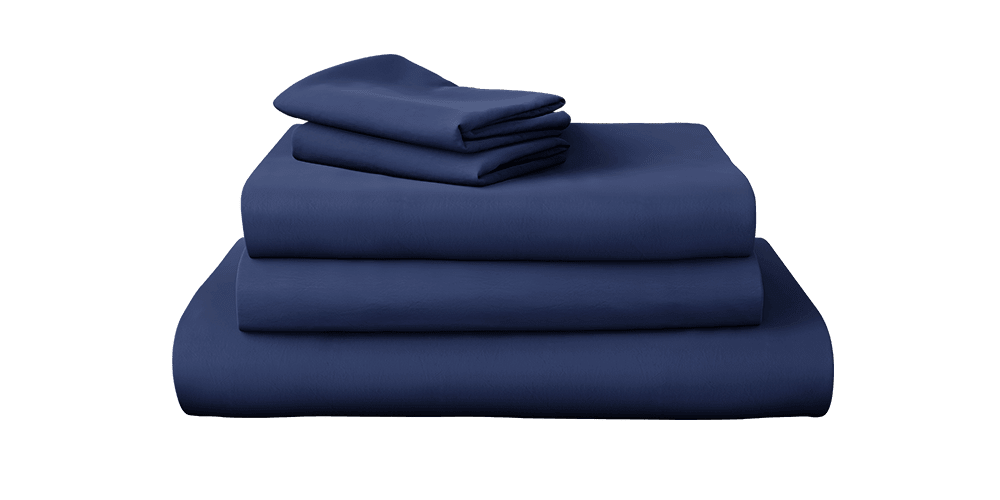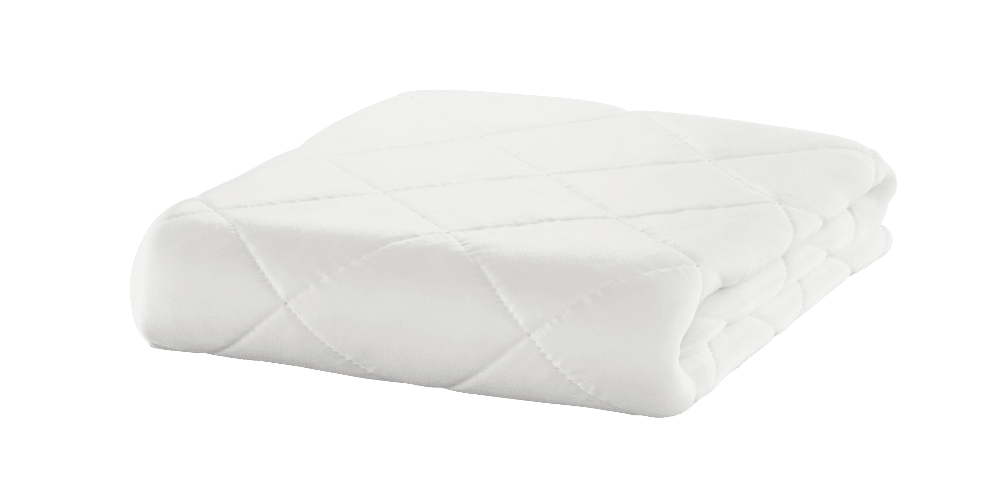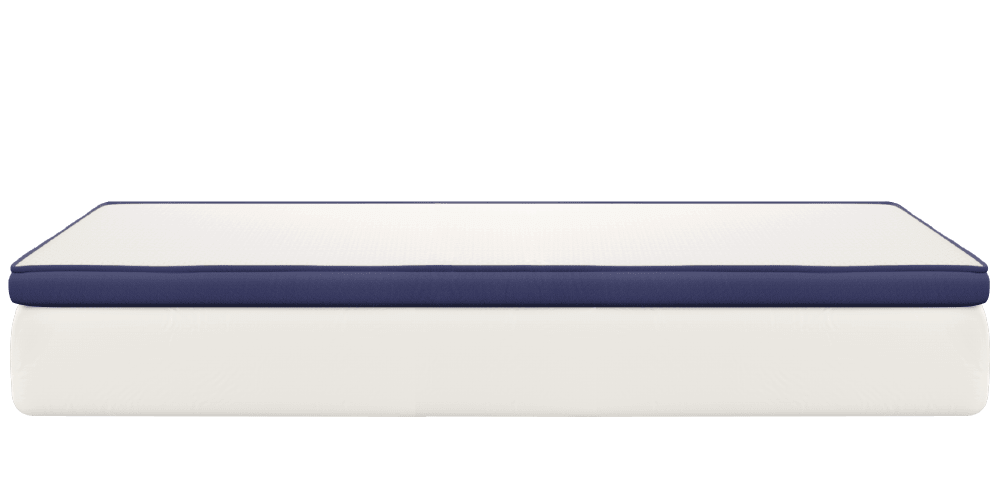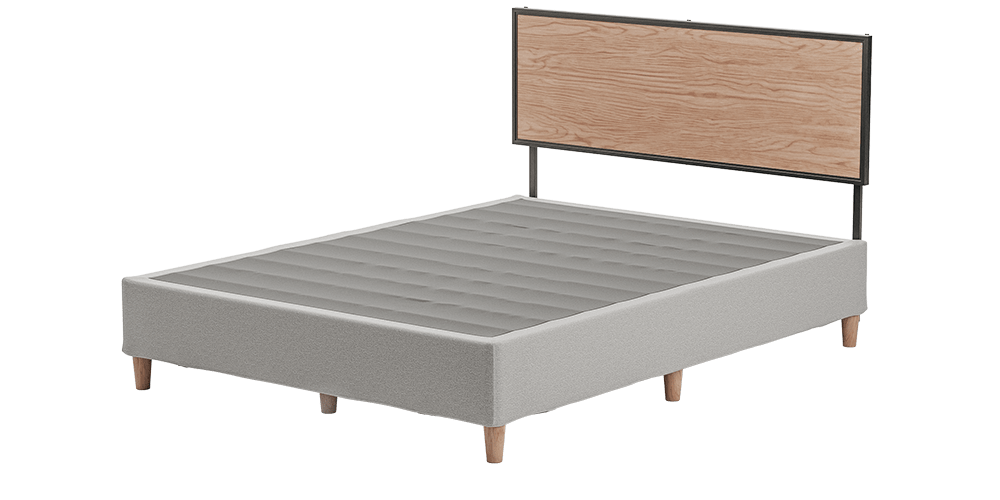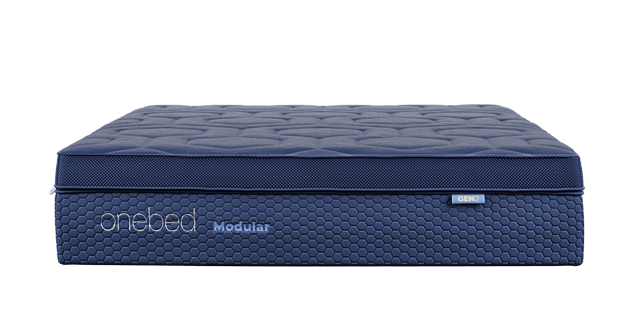
Understanding how to choose a mattress that suits your unique needs is essential to improving sleep quality, comfort, and overall well-being. Selecting the right mattress requires balancing various factors, from material type and firmness level to lifestyle considerations and Australia’s diverse climates. This guide covers everything you need to know about choosing a mattress that aligns with your specific sleep needs and comfort preferences.
Key Factors to Consider When Choosing a Mattress
If you’re uncertain how to choose the right mattress, start by evaluating your unique sleep requirements and preferences. The following are crucial factors to weigh in:
1. Sleep Position and Pressure Points

Your sleep position significantly influences the kind of mattress you need:
- Side Sleepers: Side sleepers benefit from softer to medium-firm mattresses, which provide cushioning for the hips and shoulders. If you’re considering a more compact option, a Single Mattress can be the perfect choice for smaller rooms or guest spaces. A mattress that contours to these pressure points is essential to maintain spinal alignment and reduce joint strain.
- Back Sleepers: For back sleepers, a medium to firm mattress is ideal for supporting spinal alignment. It should be firm enough to keep the lower back elevated, preventing excess sagging that can lead to misalignment.
- Stomach Sleepers: Stomach sleepers generally require a firm mattress to prevent the midsection from sinking excessively, which can lead to lower back pain and discomfort over time.
- Combination Sleepers: Those who shift between positions should consider a medium-firm mattress that offers balanced support, accommodating multiple sleeping positions without compromising comfort.
2. Body Weight and Support Requirements
Your body weight can affect how a mattress feels and performs:
- Heavier Individuals (90kg and above): Heavier sleepers often need denser, more supportive materials to prevent sagging and maintain comfort. Options like innerspring and hybrid mattresses work well as they offer durability and enhanced support, maintaining their shape over time.
- Lighter Individuals (Under 60kg): Lighter sleepers may prefer softer mattresses to prevent feeling like they’re “floating” on the surface. Softer foams, like memory foam, adapt to lighter body weights more comfortably, allowing for slight sinkage without compromising support.
3. Health Needs and Special Considerations
- Back Pain: If you’re prone to back pain, understanding how to pick a mattress that offers pressure relief is crucial. Memory foam and hybrid mattresses often provide the best combination of support and contouring to relieve lower back pressure while maintaining proper spinal alignment.
- Allergies and Sensitivities: For individuals with allergies, selecting hypoallergenic materials is beneficial. Latex and organic cotton are naturally resistant to dust mites and allergens. Many modern mattresses also offer covers treated with anti-microbial agents to help minimise allergen buildup.
4. Climate Considerations
- Warm Climates: If you sleep hot or live in a warmer area, consider cooling technologies such as gel-infused foams or open-cell latex. These materials encourage airflow, dissipate body heat, and ensure a more comfortable sleep temperature.
- Cold Climates: In cooler areas, materials like memory foam, which tends to retain body heat, can provide added warmth and comfort during colder nights. Wool-topped or hybrid mattresses with memory foam layers are also excellent choices for colder climates as they insulate effectively.
5. Budget Ranges and Value for Money
Budget is a significant factor in mattress choice, with prices influenced by materials, construction, and brand. Here’s a breakdown of typical mattress prices in Australia:
- Budget-Friendly Options ($300–$500): Generally, basic foam or innerspring mattresses fall into this range. These options work well for short-term needs or guest rooms.
- Mid-Range ($800–$2,000): This category includes many hybrid and memory foam models that offer excellent comfort, durability, and support. Most adults find good value in this range.
- Luxury Models ($2,000+): Luxury mattresses, such as those made with premium materials like natural latex or organic cotton, often provide the best comfort and longevity, though at a higher price. They may also include advanced features like adjustable firmness and cooling technologies.
Matching Your Mattress to Your Life Stage
Your life stage affects how to select a mattress, with different needs at each phase. Here’s a more detailed look at what’s best for each group:
1. Infants and Toddlers
- Key Considerations: Infant and toddler mattresses should be firm and breathable to reduce risks like Sudden Infant Death Syndrome (SIDS). Firmness is essential as softer surfaces increase the risk of suffocation.
- Materials: Look for mattresses with organic, non-toxic materials like natural latex or bamboo, which are naturally hypoallergenic. A waterproof cover or crib mattress protector is also recommended to protect against spills and increase longevity.
2. School-Aged Children and Teenagers
- Growth and Support: As children grow, a mattress that supports spinal alignment becomes essential. Hybrid or memory foam mattresses work well, as they adjust to changing body shapes while maintaining support.
- Durability: Durable, long-lasting models are a worthwhile investment for growing children. Consider options that withstand frequent use without showing wear and tear, ensuring comfort as they grow.
3. Couples
- Motion Isolation and Firmness: Couples may prefer mattresses with strong motion isolation to minimise sleep disturbances. Memory foam and hybrid mattresses are excellent choices as they absorb movement and reduce noise.
- Customisable Options: If each partner has different firmness preferences, consider a customisable mattress that offers separate firmness zones or dual firmness levels.
4. Pregnant Women
- Comfort and Support Adjustments: Pregnant women benefit from mattresses that provide lumbar support and relieve pressure points. Medium-firm memory foam or hybrid mattresses with contouring layers can adjust to the body’s changing weight distribution.
- Ease of Movement: Since ease of movement is crucial during pregnancy, hybrid mattresses or those with responsive layers like latex offer excellent support for turning and shifting positions comfortably.
5. Older Adults
- Pressure Relief and Mobility: As we age, joint discomfort often becomes a concern. Memory foam or latex mattresses are beneficial as they relieve pressure on joints without compromising support.
- Breathability and Support: Older adults may also benefit from hybrid mattresses that combine foam with coils, offering both breathability and firm support to help ease getting in and out of bed.
How to Choose a Mattress for Back Pain Relief
Back pain sufferers should focus on finding a mattress that promotes spinal alignment and reduces strain on pressure points. Here’s what to consider:
1. Lower Back Pain
- Firmness Level: For lower back pain, a medium-firm mattress provides the ideal balance of support and comfort, helping to keep the spine properly aligned.
- Supportive Layers: Look for mattresses with high-density support layers that reinforce the lumbar area. Zoned support mattresses, which provide varied firmness across different sections, can be particularly helpful.
2. Upper Back and Shoulder Pain
- Firmness and Pillow Pairing: Firmer mattresses, combined with supportive pillows, are often recommended for upper back pain, as they help maintain proper neck and shoulder alignment.
- Material Choice: Memory foam and latex are ideal for their ability to conform to the upper back and shoulders, reducing pressure and promoting spinal alignment. Adjustable beds can also help by slightly elevating the head to relieve strain.
Choosing a Mattress Based on Sleep Position
Understanding how to pick a mattress that matches your sleep position is essential for comfort and proper alignment:
- Side Sleepers: Require a mattress with soft to medium firmness that cushions pressure points. Memory foam and latex mattresses work well for side sleepers as they contour to the body shape, relieving pressure on the shoulders and hips.
- Back Sleepers: Benefit from medium to firm mattresses to support the spine, maintaining natural alignment and reducing the risk of lower back pain.
- Stomach Sleepers: Best suited to firm mattresses, which prevent the midsection from sinking excessively, helping to maintain a neutral spine and prevent back strain.
- Combination Sleepers: A medium-firm mattress provides versatility and balanced support, allowing freedom of movement for those who shift between positions throughout the night.
Understanding Mattress Types and Their Benefits
Different mattress types cater to specific sleep styles, comfort needs, and preferences. Here’s a comparison to help you make an informed choice:
Mattress Type Best For Key Benefits Memory Foam Side sleepers, couples Provides excellent pressure relief, contours to body, reduces motion transfer Innerspring Back sleepers, budget-conscious buyers Offers strong support, durability, and breathability; often more affordable Hybrid All sleep styles Combines support from coils and comfort from foam; versatile and durable Latex Eco-conscious sleepers, allergy sufferers Hypoallergenic, cooling, responsive; great for pressure relief Airbeds Couples with different firmness needs Adjustable firmness settings; ideal for customisable comfort
Each type offers unique benefits, so consider your specific comfort needs, budget, and preferences before making a selection.
How Mattress Materials Affect Sleep Quality and Health
Mattress materials play a critical role in both comfort and health. Here are key points to consider:
- Memory Foam vs. Natural Latex: Memory foam offers exceptional contouring and pressure relief, making it ideal for side sleepers and individuals with joint pain. However, if you’re eco-conscious, consider natural latex, which is not only biodegradable but also hypoallergenic, resistant to dust mites, and naturally cooling. It’s a great choice for those with sensitive skin or allergies.
- Off-Gassing and Chemical Safety: Many foam mattresses emit an initial odour known as off-gassing due to volatile organic compounds (VOCs). If you prefer low or no VOC emissions, look for CertiPUR-US or OEKO-TEX certified mattresses, which ensure that the mattress materials meet strict safety and environmental standards.
- Breathable Fabrics and Allergen Resistance: Fabrics like organic cotton and bamboo offer breathability and moisture-wicking properties, making them suitable for humid climates. Bamboo in particular is highly breathable, naturally antimicrobial, and softer than cotton, adding to the mattress’s comfort and durability.
Climate-Specific Mattress Recommendations for Australia
Australia’s diverse climate influences the type of mattress materials that work best across different regions:
- Hot and Humid Regions: In regions like Darwin and Cairns, opt for mattresses with cooling technologies, such as gel-infused memory foam or breathable latex. These materials help regulate body temperature, ensuring comfort in warm climates.
- Cooler Southern Regions: In cooler areas, such as Melbourne or Hobart, memory foam and wool-topped mattresses provide insulation and warmth.
- Dry Inland Areas: For arid environments, dust-resistant and hypoallergenic options like latex are beneficial, as they withstand dry conditions and minimise allergen exposure.
Mattress Size and Room Fit Guide
The correct mattress size is essential for a comfortable fit in your bedroom. Here are the standard sizes in Australia:
Mattress Size Dimensions (cm) Best For Single 92 x 187 Ideal for solo sleepers and children’s rooms Double 138 x 187 Suitable for couples with limited space Queen 153 x 203 Provides extra room for couples King 183 x 203 Best for couples who prefer ample sleeping space
When selecting a mattress, consider both your room size and sleeping preferences for the best fit.
Pro Tip: If you prefer a bit more space than a single but still want to keep your bedroom layout efficient, a Double Mattress could be the perfect choice. It’s a versatile option for solo sleepers who like extra room or couples who don’t need a large bed.
Maintenance and Buying Tips
Investing in a quality mattress doesn’t end with the purchase; proper care and smart buying strategies can significantly extend its lifespan and save you money. Follow these essential tips to ensure comfort, durability, and value over time.
1. Routine Mattress Maintenance for Longevity
Consistent care can make a big difference in preserving your mattress’s support and hygiene. Here’s a recommended maintenance schedule:
- Monthly Care: Use a high-quality mattress protector to shield the surface from spills, allergens, and dust. Regularly vacuum the mattress surface to prevent dust buildup and maintain cleanliness, especially if you have pets or allergies.
- Quarterly Care: Rotate your mattress every three months to distribute wear evenly, particularly if it’s a single-sided model. If your mattress is double-sided, flip it as well to reduce surface impressions and sagging.
- Annual Deep Clean: Once a year, give your mattress a thorough clean. Remove and wash the mattress cover, spot-clean any stains using a mild cleanser, and use an upholstery cleaner for a deep cleanse. This annual maintenance helps keep the mattress hygienic and fresh.
Additional Tip: Consider airing out your mattress on a sunny day once a year. Sunlight naturally disinfects and helps reduce moisture buildup, which can extend the mattress’s longevity and prevent mould or mildew.
2. Using Accessories to Simplify Mattress Maintenance
Certain accessories can make mattress upkeep easier and extend its lifespan:
- Mattress Protector: A waterproof protector helps keep your mattress free from spills and allergens, making monthly cleaning simpler and reducing the need for deep cleaning.
- Mattress Topper: Adding a topper absorbs daily wear, preserving your mattress’s shape and support for longer.
- Adjustable Pillow: An adjustable pillow supports proper sleep posture, reducing excess pressure on your mattress and helping maintain even wear.
3. Smart Purchasing Tips for Greater Savings
Timing and strategy can be instrumental in getting the best deal on your mattress. Here’s how to plan your purchase:
- Seasonal Sales Events: Major Australian sales events, such as Australia Day, End-of-Financial-Year Sale, and Boxing Day, often feature significant discounts on mattresses. Plan your purchase around these periods to take advantage of price reductions.
- Sign Up for Newsletters: Many mattress retailers offer exclusive discounts or welcome coupons for newsletter subscribers. Signing up can help you access early-bird deals, flash sales, or seasonal promotions not advertised elsewhere.
- Look for Bundle Deals: Some brands offer bundled discounts that include pillows, mattress toppers, and protectors. These packages add value by providing essential accessories while reducing the total cost of your purchase.
- Use “Buy Now, Pay Later” Options: Payment options like Afterpay and Zip Pay allow you to split the cost into multiple payments, often interest-free. This can make purchasing a high-quality mattress more affordable without the need for upfront payment.
Pro Tip: When buying online, check for trial periods and return policies. Many brands offer 90 to 120-night trials, allowing you to test the mattress at home. If it doesn’t meet your expectations, a generous return policy ensures you can exchange or return it for a better fit.
Conclusion: Finding the Right Mattress for Long-Lasting Comfort
Selecting the right mattress tailored to your sleep style, comfort needs, and Australia’s unique climate can make a lasting difference in sleep quality. Onebed offers thoughtfully designed collections such as the Onebed X 12”with premium hybrid features, ideal for Australians seeking quality and durability. With options catering to various sleep preferences, Onebed provides high-quality mattresses at affordable prices, backed by a generous trial period and warranty, ensuring you find the right fit for restful and supported sleep.



